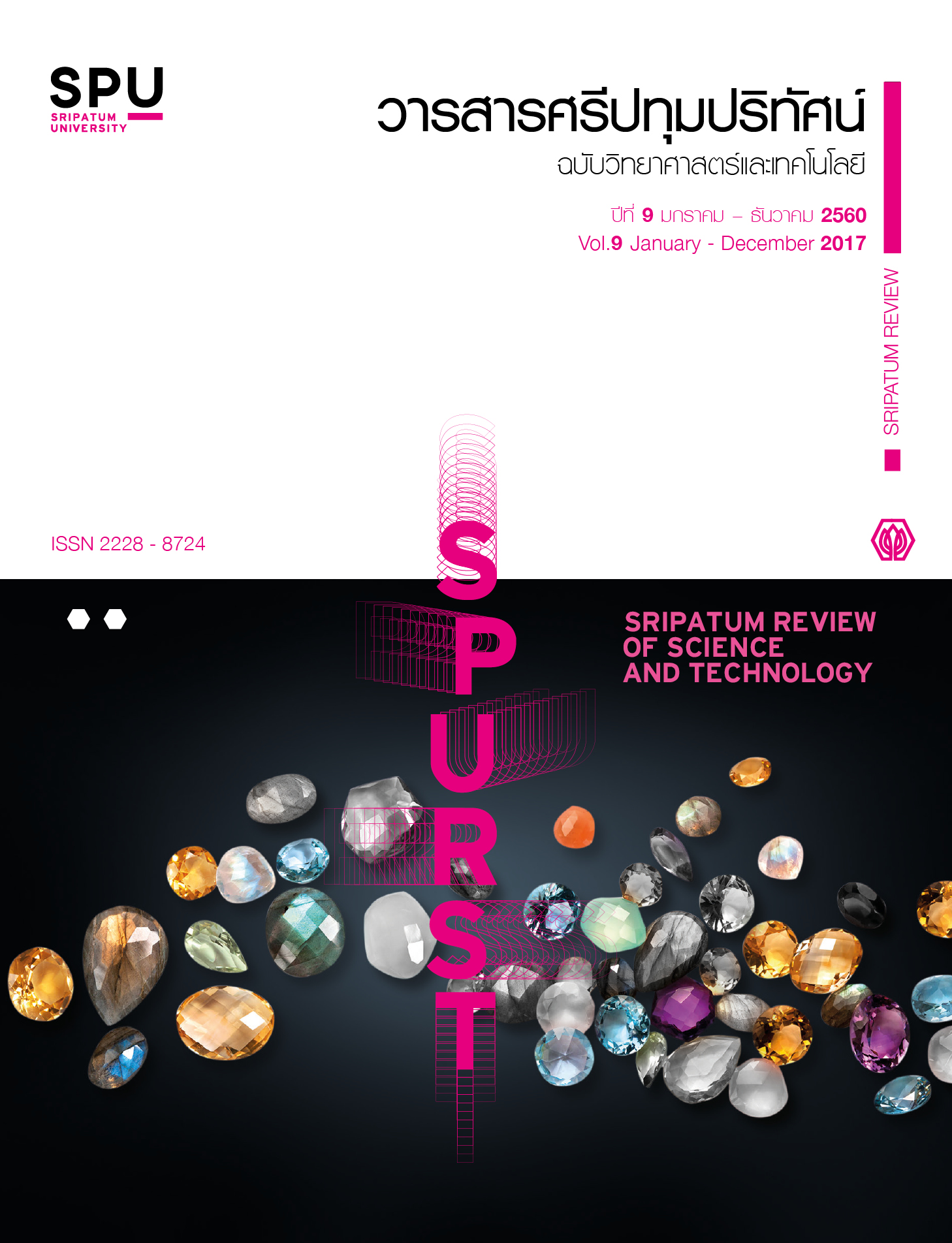THE USE OF ONTOLOGICAL ENGINEERING PRINCIPLE TO DEVELOP A KNOWLEDGE BASE FOR INTEROPERABILITY OF MULTI-CLOUD COMPUTING PLATFORMS
Main Article Content
Abstract
The objective of this research is to develop a knowledge base in the form of ontology using ontological engineering principles for supporting interoperability of multi-cloud computing platforms of three Infrastructures-as-a-Service (IaaS) platforms such as OpenStack, Apache Cloud Stack and VMware Esxi. This will reduce costs in system expansion and improve capabilities in response to rapidly changing business demand for IaaS resources. The development of a proposed ontology is based on the 5 steps of ontological engineering: 1) feasibility, 2) kickoff, 3) refinement, 4) evaluation, and 5) application and evolution. An ontology development tool used in our research is Protégé software. The developed ontology comprise four classes that represent the core components of Cloud platform, which are physical compute device, cloud computing platform, template server, and REST VM life cycle management. Under these four main classes, 17 subclasses are included in this ontology. The evaluation of the presented ontology is based on a set of 36 question items frequently used throughout virtual machine life cycle. It was found that the ontology delivered 100 % of precision, 100 % of recall and 100 % of F-Measure.
Article Details
References
Ali, A., Shamsuddin, S. M., and Eassa, F. E. 2012. "Ontology-based Cloud Services Representation." Research Journal of Applied Sciences, Engineering and Technology 8, 2012 8th, Maxwell Scientific Organization: 83-94.
Amazon Web Services, Inc. (2016). “Amazon Elastic Compute Cloud (EC2).” Amazon Web Services, Retrieved January4, 2016.
Apache CloudStack. (2016). "Apache CloudStack Open Source Cloud Computing." Apache Software Foundation, RetrievedJanuary4, 2016.
Armbrust, M., Fox, A., Griffith, R., Joseph, A. D., Katz, R. H., Konwinski, A., Lee, G., Patterson, D. A., Rabkin, A., Stoica, I., and Zaharia, M. (2009). "Above the Clouds: A Berkeley View of Cloud Computing." Technical Report No. UCB /EECS-2009-28, Retrieved January 4, 2016.
CAT Telecom, Inc. (2015). “IRIS platform innovative cloud ecosystem by CAT.” IRIS platform, Retrieved Dec 7, 2015.
Gartner, Inc. (2015). "Gartner's 2015 Hype Cycle for Emerging Technologies Identifies the Computing Innovations That Organizations Should Monitor." Gartner Symposium, Retrieved January 4, 2016.
Google,Inc. (2016). “COMPUTE ENGINE Scalable, High-Performance Virtual Machines.” Google Cloud Platform, Retrieved Jan 4, 2016.
Gruber, T. (2007). “Ontology Definition.” Ontology by Tom Gruber. Retrieved Aug 6, 2014, from http://tomgruber.org
Huapai, S., and Banditwattanawong, T. 2015. "An Interoperability Ontology for Multi-Cloud Computing Platforms." International Conference on e-Business (iNCEB2015), November 23-24.
IDC, Inc. USA. (2016). “Cloud Research.” IDC Four Pillar Research Area. Retrieved Jan 4, 2016.
ITA. U.S. Department of Commerce (2016). 2016 Top Markets Report Cloud Computing. Accessed April 1, 2016.
Kang, G. S., Singh, J., and Khanna, M. S. 2011. "Semantic Web Services in Clouds for Semantic Computing." Proceedings of the International Conference on Advances in Computing and Artificial Intelligence, ACM: 229.
Mell, P. and Grance, T. (2011). “The NIST definition of cloud computing.” National Institute of Standards and Technology, Special Publication 800-145, Retrieved February1, 2016.
Ngo, C., Demchenko, Y., and Laat, D. C. 2015. "Multi-tenant attribute-based access control for cloud infrastructure services." Journal of Information Security and Applications, Elsevier:20.
National Institute of Standards and Technology (NIST) is an agency of the U.S. Department of Commerce. (2015). “NIST Cloud Computing Reference Architecture.” NIST Special Publication 500-292, Retrieved January 4, 2016.
Obrst, L., Ceusters, W., Mani, I., Ray, S., and Smith, B. 2007. "The Evaluation of Ontologies." In Semantic Web, pp.139-158. US: Springer.
OpenStack. (2015). “Welcome to OpenStack Documentation.” OpenStack, RetrievedJanuary4, 2016.
Quinton, C., Haderer, N., Rouvoy, R., and Duchien, L. 2013. "Towards Multi-Cloud Configurations Using Feature Models and Ontologies." MultiCloud’13, ACM: 21-26.
Staab, S., and Studer, R. 2009. "Ontology Engineering." In Handbook on Ontologies., pp.135-154. US: Springer.
VMware, Inc. (2016). VMware ESXi overview. Accessed April 1, 2016.
Zhang, M., Ranjan, R., Haller, A., Georgakopoulos, D., Menzel, M., and Nepal, S. 2012. "An ontology-based system for Cloud infrastructure services discovery." International Conference on Collaborative Computing: Networking, Applications and Worksharing 14-17(October), (IEEE): 524-530.
ZhiHao, Z., JiPing, H., Ting, D., and Yu, W. 2012. "Semantic Web Service Similarity Ranking Proposal Based on Semantic Space Vector Model." International Conference on Intelligent Systems Design and Engineering Application,6-7(January), (IEEE): 917-920.


